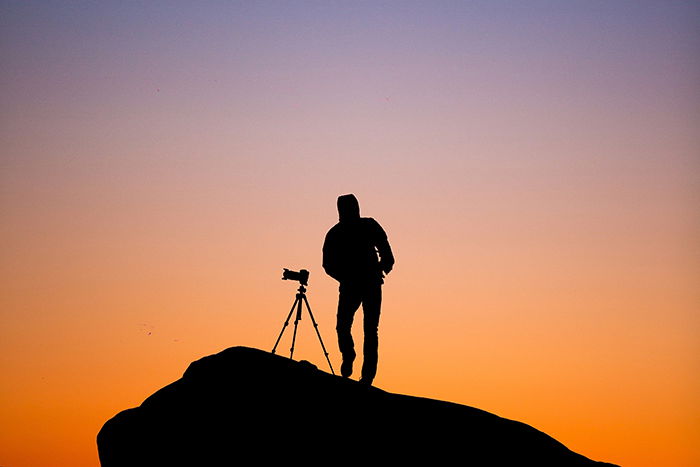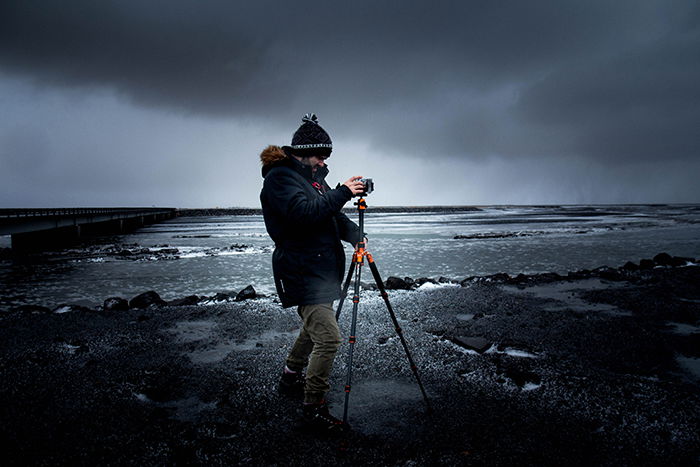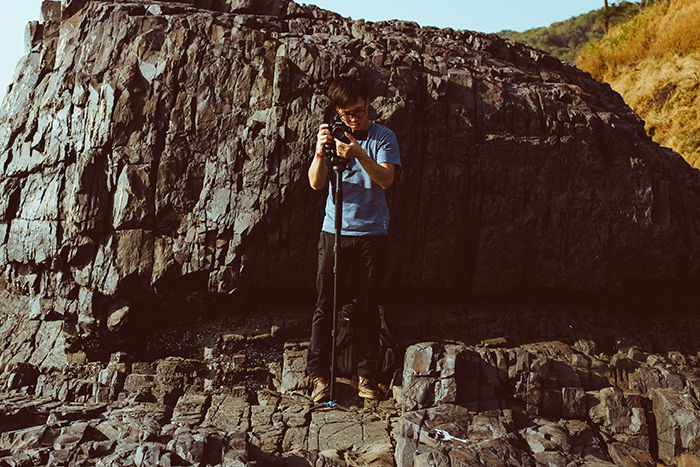Both monopods and tripods offer more support than shooting handheld alone. But the two accessory types have some major differences. One is more stable, one is more mobile. A tripod or a monopod may be better suited to your photography work than another. In some cases, you may want to use both. Here’s what you need to know when comparing the monopod vs tripod.
What Is a Tripod? What Is a Monopod? Comparing Monopod Vs Tripod
Both a tripod and monopod are accessories designed to support a camera — where the two differ are the legs. A tripod has three legs (that’s the “tri”). A monopod is a camera support that has one leg (that’s the “mono”). Much of the rest of the design is similar across both accessories. Both are height adjustable, for example. And both often use quick release plates for easily adding and removing the camera. Construction is often similar and many brands that make tripods also make monopods. But, the number of legs creates some major differences between tripods and monopods. Those differences determine what’s the best tool for the photography job and whether you need one or both in your gear kit.
Tripods — the Perks of Three Legs
With three legs, tripods are the most stable. Using a tripod, you can shoot longer exposures than you could with a monopod. A monopod will reduce some camera shake. But tripods are best for taking seconds or even minutes-long exposures. Wind or even poor build quality can create shake even with a tripod. But tripods are still among the most stable camera supports. A tripod’s design means you can leave the camera on the top and walk away. Do this with a monopod and your camera will literally eat the dust. If you want to take a selfie, or set up a camera for shooting wildlife photos while you’re out of sight, a tripod is the only option. Tripods will also keep the camera fixed in one location, where a monopod isn’t quite as precise. That exact placement can be helpful when shooting macro photos. It’s also great for shots that mean stitching the images together such as in HDR photography and panoramas. Tripods tend to be the more popular option — which means there are plenty of models on the market to choose from. While there’s no shortage of monopods, there are often more choices in the tripod category.
Why Shoot With a Monopod?
So why would photographers want to use a monopod, if a tripod offers the best stabilization? The advantages of working with a monopod largely stem from the smaller size of the single-legged camera support. First, tripods take a bit of floor space to spread out those three legs. Monopods, in comparison, take up a tiny dot of floor space. If you’re shooting in a crowded venue, a tripod may be a trip hazard. Some locations even ban tripod use for that reason. The smaller profile also makes monopods more mobile. Imagine you are shooting a football game and need to continuously adjust your position at the side of the field to keep up with the action. With a tripod, you’d need to fold up legs to move quickly down the sidelines. With a monopod, you just pick it up and go. You can follow the action much faster with a monopod, while still sorting that heavy sports lens. The speed also extends to setup and takedown. With only one leg to unfold and adjust to the right height, setting up and taking down a monopod is faster. Ditch two legs, and of course, you’re going to have a lighter accessory. Monopods tend to weigh less than tripods. This makes them more travel-friendly, even when folded up.
Working With Tripods and Monopods
Both tripods and monopods will take the weight of the camera strap off your neck. And they’ll offer some level of protection against camera shake. A tripod is the most stable camera support, but tends to be bulky and can slow down your movement. A monopod isn’t as stable, but restricts your movement much less than a tripod. So which one do you need? If you need to be mobile, a monopod is the best bet. With a monopod, you’re not stuck in one location. And you can support the weight of big lenses and offer some light protection against camera shake. If you need to shoot seconds long exposures, such as to blur a waterfall, you’ll want the stability of a tripod. What a tripod lacks in mobility it makes up for in stability. You can shoot sharp long exposures and shoot with the biggest, heaviest lenses. But if you need both, you may not have to actually buy both a monopod and a tripod. Some tripods are two-in-one. They convert from the more stable system to the more mobile one with just a few adjustments. Convertible tripods typically work in one of two ways. The first kind converts the center post of the tripod into a monopod. This is easy to use and doesn’t require much to switch between the two. The twist locks necessary to make the center column small enough to work with both tend to be less stable than flip locks. Other types of convertible tripods work by removing one of the legs and reattaching it to the center column. This creates less of a height restriction and allows for more stable locks. It may be more time-consuming when switching from a tripod to a monopod and back again. Buying both may be easier than taking the time to convert back and forth. But a convertible option will take up less space than packing both on a photography trip. And of course, buying a single convertible tripod is often cheaper than buying both a tripod and a monopod. Some monopods also have small, pop-out support legs at the bottom called a support base or folding base. You still can’t walk away from the monopod with the mini legs out, but you can get a bit more stability than a monopod alone. Ready to buy? Check out the best monopods and tripods to buy on a budget here.
Conclusion
Monopods and tripods have a similar purpose, but with vastly different perks and features. Tripods are more stable, while monopods are more mobile. Tripods are ideal for long exposure photography and macro work. Monopods are great for steadying long lenses while on the move sports photography. You might need both stability and mobility. In that case, you can pick up a tripod that converts into a monopod to get both perks without investing in both.





